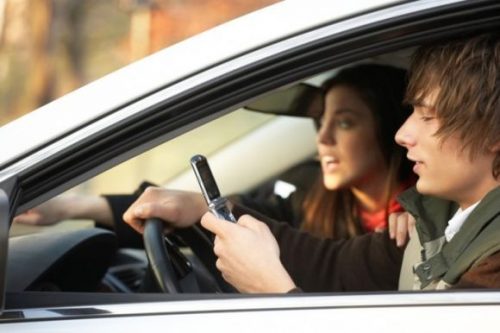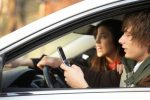According to a recent study by Carnegie Mellon University, drivers who are distracted by cell-phones have a greater chance of causing an accident than a drunk driver who has a blood alcohol level of 0.08%. While this distraction can be lessened by new hands-free technology that converts emails and texts into voice messages, even the act of listening distracts the brain and causes a 37% decrease in parietal lobe activity.

Distracted driving is a major safety issue for all drivers. Preventing it should be a priority for everyone.
Distracted Driving 101
Distracted driving comes in a lot of “flavors” – eating, talking to other passengers, attending to children or pets, watching roadside diversions, adjusting or programming electronic devices, and personal grooming are all significant (and common) distractions. But the leading and most dangerous distraction while driving is the use of mobile phones to talk or text.
Texting while driving is particularly dangerous and increases the accident risk by 23%, according to distraction.gov. This is because texting requires the driver to divert visual, manual, and cognitive attention, the three primary functions used while driving, away from the road. On average, drivers spend 4.6 seconds looking at their phone every time they send a text message. At 55 mph, this is equivalent to driving the length of a football field while blindfolded!
Distracted driving now accounts for more than 25% of all traffic accidents, according to the Automobile Association. In 2012, distracted drivers caused almost 1.3 million traffic accidents, 421,000 injuries and 3,328 deaths. Teenagers, or drivers under 20, account for the majority of distracted driving accidents and fatalities. Nonetheless, otherwise responsible adult drivers are not immune to distracted driving.
Distracted Driving – Prevention Efforts
Obviously, the easiest way to prevent distracted driving is “just don’t do it.” Most US states do not allow drivers to text while on the road, and some states have taken this ban a step further and made it illegal for teens to have a cell phone within arm’s reach while driving. The U.S. Department of Transportation continues to encourage states to adopt stricter distracted driving laws.
Fortunately, we’ve got more than just legal penalties to help us prevent distracted driving. In the last few years, technology fixes have been developed that can assist individuals and parents who want to prevent drivers from texting when they drive. For example, a mobile app called Textecution uses a Smartphone’s built-in accelerometer to sense when a car is going faster than 10 miles per hour and prevents any texting on the device. CellControl produces a device that attaches to the steering column and prevents texting on devices in the car when cars are in motion. TextLimit is an app that allows parents to set a speed at which a phone’s features can be partially or fully disabled.
Additionally, automakers and the Nationa Highway Transportation Safety Administration (NHTSA) are researching built-in systems that would prevent distracted driving. Eye-tracking systems could be used to both a) alert drivers who look away from the road and b) “tattle” on drivers who are habitually distracted by alerting law enforcement (similar to the existing LoJack system, which alerts police cars to a nearby stolen vehicle automatically).
Ultimately, it truly is a driver’s responsibility to not text and drive. It is dangerous and illegal. As a driver, you have but one job: to drive the car. Before you start to drive, we strongly suggest you do yourself and others a life-saving favor – turn off your phone.
Author Len Jacoby is a Los Angeles car accident attorney. In 1972 he founded Jacoby & Meyers Law offices together with Stephen Meyers. For over 40 years Jacoby & Meyers have been helping people take advantage of their rights within the legal system. Len graduated from UCLA law school as a Juris Doctor in 1967 after attending UC Berkley and UCLA.





